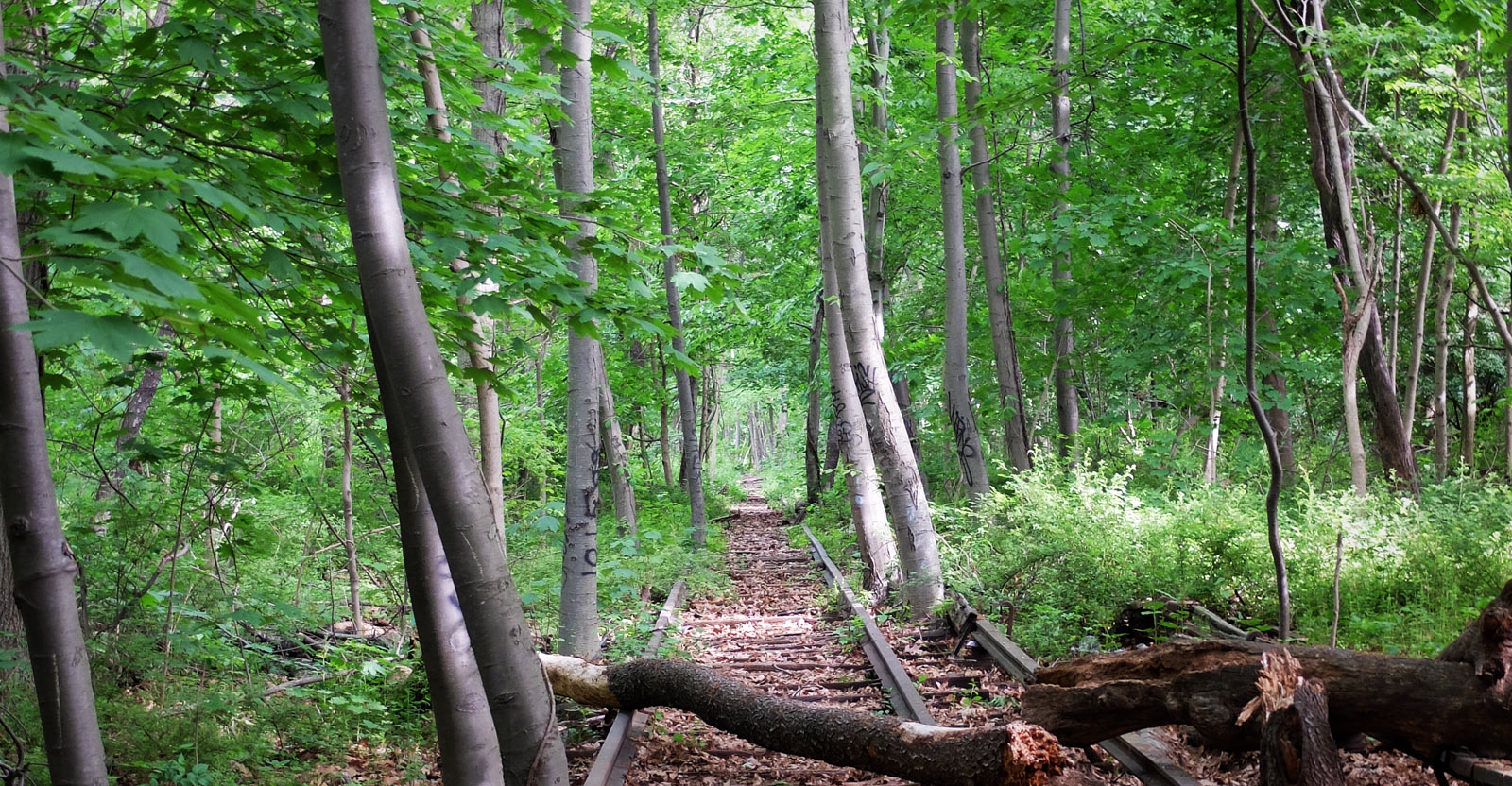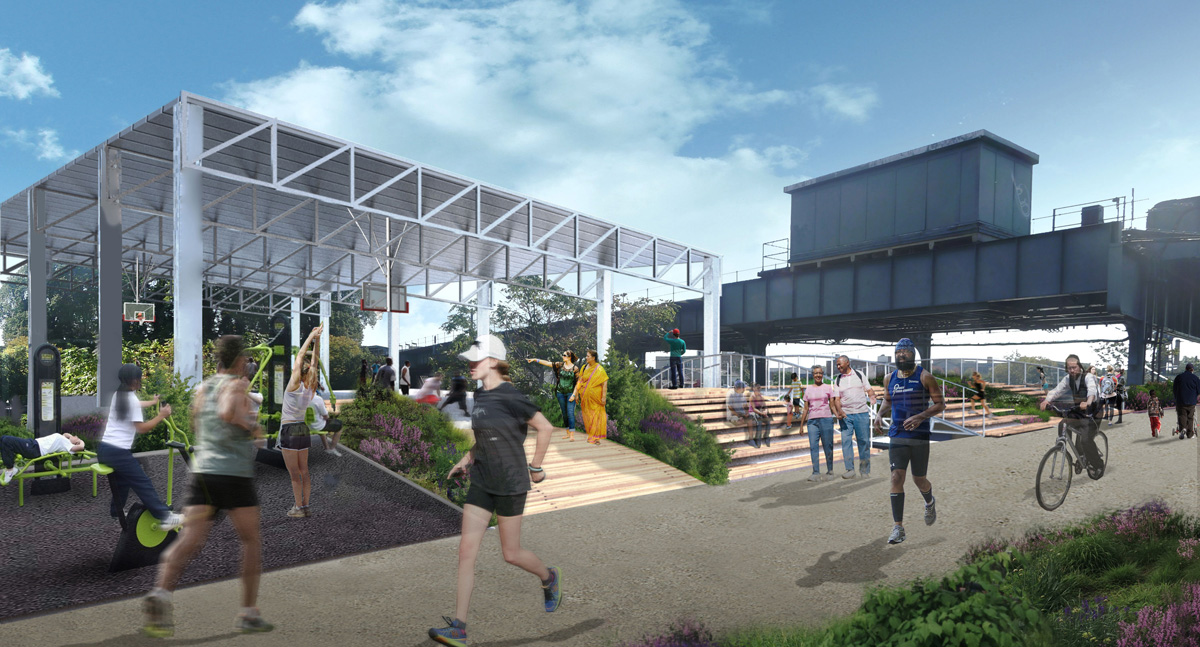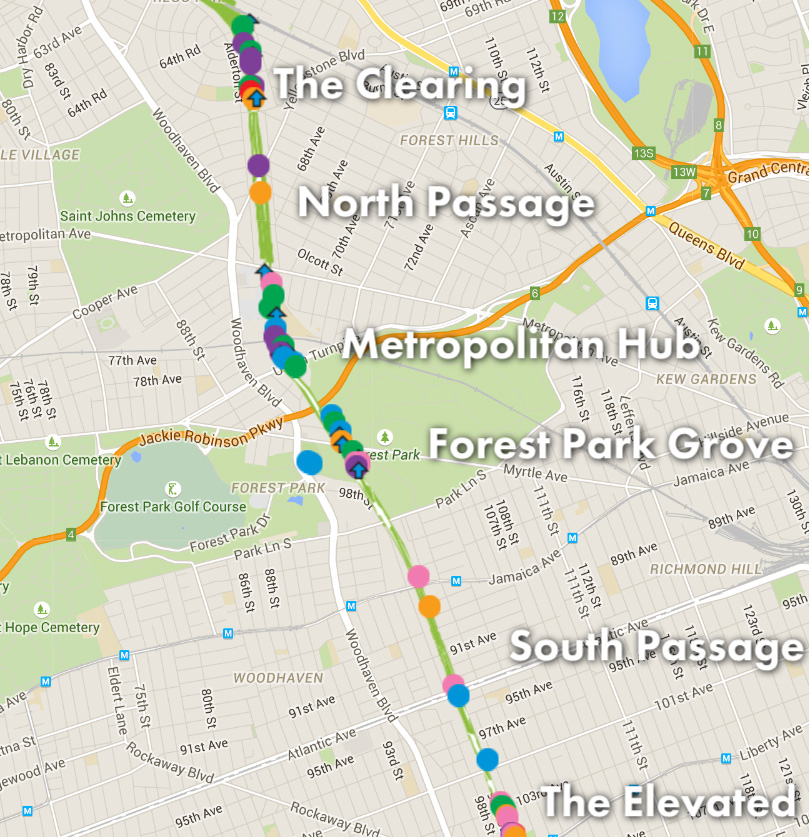Jonah Garnick interned for the Trust for Public Land, and while there, fell in love with an idea for NYC.
“I (Heart) The QueensWay.” During my internship for the Trust for Public Land (TPL), I accumulated about fifty of those buttons. Now that my internship is over, those buttons aren’t just sitting in a drawer collecting dust, serving as memories of a fun year and a half spent working for TPL – they sum up a genuine feeling.
I LOVE the QueensWay. This love affair started one chilly March evening in Richmond Hill, Queens. I was two weeks on the job, and so far had only done little odds and ends of intern tasks: proofreading letters, editing PowerPoint presentations, making copies – all the classic intern duties, with the exception of coffee runs (we had a communal coffee pot at the office and a large supply of pretty delicious coffee).
In the midst of my mundaneness, my boss, New York State Director, Marc Matsil, approached me and enthusiastically extended an invitation for me to join him in facilitating a community workshop for the QueensWay at the High School for Construction, Trades, Engineering, and Architecture. I happily agreed, hoping to make a good impression and seeing it as a chance to see some urban planning in action. At this point I still had no real grasp on what the QueensWay actually was. I had heard about it around the office, and various TPL staff had given me small pieces of QueensWay projects to help them with, but had no clue of what it was, how big it was, and how important it was.
I arrived at the school apprehensive, not knowing what to expect, and not knowing how I could help facilitate a workshop that was meant to get feedback on a project that I knew hardly anything about. Somehow it all worked out. Two hours later, after a presentation by the designers, some disruptions by protesting opponents, and many residents’ valid concerns raised and addressed, I was helping to pack up maps and models, and walked away with a much better understanding of the project, and a sense of excitement.
I should probably pause here to tell you what exactly the QueensWay is.
The QueensWay is a proposed 3.5-mile linear greenway. It crosses through six neighborhoods (Rego Park, Forest Hills, Glendale, Woodhaven, Richmond Hill, and Ozone Park), and will add forty-seven acres of parkland to Queens upon completion. At the heart of the proposal is the conversion of the abandoned Rockaway Beach Branch of the Long Island Railroad into parkland. Service on the line was discontinued over fifty years ago, and since then the tracks have fallen into complete disrepair, some parts have been overtaken by nature, others have unfortunately become a dumping ground, a favorite spot for addicts, and an informal settlement for the homeless. The city currently owns all of the land, and divides it between two agencies–forty acres is owned by the Department of Citywide Administrative Services, and the other seven (that passes through Forest Park) is owned by the Department of Parks and Recreation.

The plans for the QueensWay are grand. In the recently released feasibility report, the park would not only provide a much-needed pedestrian walkway and bikeway connecting northern and southern Queens, it would include space for outdoor classrooms for abutting schools, playgrounds, space for community and cultural programming, and most importantly serve as a monument to Queens in park form.
Returning back to my desk at TPL a few days after the workshop, I become immediately engrossed with the QueensWay. TPL New York City Director, Andy Stone, quickly assigned me to several long-term community outreach projects in which I had a lot of responsibility and autonomy over. This included a youth-leadership program at Richmond Hill in which we partnered with the non-profit, South Asian Youth Action, and led a series of workshops on public space, park equity, and asked for student input on the QueensWay.

The other community outreach project was the hungry brainchild of Marc Matsil, a food map of the best restaurants within a one-mile radius of the QueensWay. QueensWay Eats, as it was eventually named, was more than just a delicious guide to six neighborhoods in Queens, it was a great way to engage the local business owners. And as a college student and unpaid intern, I particularly liked this project and the many tastings that I was funded to do. The project just recently launched with an endorsement from the Queens Tourism Bureau and support from many of the restaurants featured on the map.
I recently officially left the Trust for Public Land, and that is one of the many reasons why I am sitting down to write this piece. I’ve had some time to reflect on my time there, on all the projects I’ve worked on, and most importantly, on the QueensWay.

In short, here’s why I love the QueensWay. The QueensWay is a dream of an idea that can actually happen in reality. It provides park space to thousands of residents who desperately need it; it turns a piece of urban blight into something beautiful, and all the while does so with the community in mind. Will gentrification happen? Perhaps, but no more than any other urban renewal project, and this will certainly not have a “High-Line” effect and turn Queens into a commercialized chic wasteland of trendy clubs and microbrews.
Does Queens need more transit options? Yes, but it also needs another park, and the logistical and fiscal nightmare of building transit on that abandoned strip of land is unbearable (and trust me, there are better options to bring better transit to Queens). And finally, this internship has made me love not only the QueensWay, but also Queens. It has been the neglected borough for far too long. The QueensWay is not only something that Queens needs; it’s what it deserves.
Photo: A button belonging to the author, taken by J. Garnick